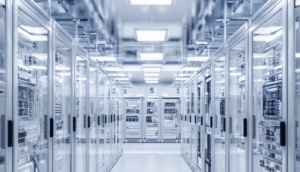In today’s increasingly automated world, the demand for reliable and high-performance data communication is paramount, especially in industrial and medical sectors. These sectors rely heavily on accurate and timely data transmission for critical operations, ranging from robotic control in manufacturing to real-time patient monitoring in healthcare. Industrial and medical data communication cables play a vital role in ensuring this accuracy. Their specialized designs and robust construction are specifically engineered to withstand harsh environments and maintain signal integrity where standard cables simply fall short. The reasons behind their suitability for high-precision applications are multifaceted, rooted in their superior materials, construction techniques, and rigorous testing protocols.
One of the key differentiating factors is the shielding effectiveness of these cables. Industrial environments are often rife with electromagnetic interference (EMI) and radio frequency interference (RFI) generated by heavy machinery, welding equipment, and other electronic devices. These interferences can corrupt data signals, leading to inaccuracies and potentially catastrophic errors. Industrial and medical cables employ multiple layers of shielding, including braided shields, foil shields, and combinations thereof, to effectively block out these external disturbances. This superior shielding ensures that the data transmitted through the cable remains clean and uncorrupted, even in the presence of significant electromagnetic noise. The choice of shielding material and configuration is carefully considered based on the specific application and the level of interference expected.

Beyond shielding, the materials used in constructing these cables are also critical for their high-precision performance. Conductors are typically made of high-purity copper, ensuring optimal conductivity and minimal signal loss. Insulation materials are chosen for their dielectric properties, minimizing signal distortion and maintaining signal integrity over long distances. Jacketing materials are selected for their resistance to abrasion, chemicals, temperature extremes, and other environmental factors. For medical applications, biocompatible materials are often used to ensure that the cables are safe for use in close proximity to patients. The precise combination of these materials is carefully engineered to optimize cable performance and longevity in demanding environments.
Furthermore, industrial and medical cables undergo rigorous testing and certification processes to ensure compliance with industry standards and regulatory requirements. These tests evaluate parameters such as signal attenuation, impedance matching, crosstalk, and return loss. Cables that meet these stringent requirements are certified to provide reliable and accurate data transmission. These certifications provide assurance to end-users that the cables are fit for their intended purpose and will perform as expected in critical applications. Specific standards, such as those from UL, CSA, and IEC, dictate the performance and safety requirements for different types of industrial and medical cables.
In conclusion, the suitability of industrial and medical data communication cables for high-precision applications stems from a combination of factors: superior shielding, high-quality materials, and rigorous testing and certification. These cables are engineered to withstand harsh environments, minimize signal interference, and ensure accurate data transmission. As automation and data-driven technologies continue to advance in industrial and medical sectors, the importance of these specialized cables will only continue to grow, enabling more precise, efficient, and reliable operations. Selecting the right cable for a specific application is crucial, requiring careful consideration of the environmental conditions, data transmission requirements, and applicable industry standards.